第22章 CHAPTER VII(3)
Then, when you are ready, watch the guide adjust the much-lightened pack, for the supply of "grub" is getting low; perhaps assist him swing the packs on the packsaddle, put on the canvas covering and throw the "diamond hitch," and then saddle your own horse--for by now you will have begun to feel some confidence and pride in doing things that the "tenderfoot"generally leaves to the guide--and soon you are climbing up the trail on your way to the rim. As soon as you are on "top," you "push on" the pack animals and "hit the trail hard" by way of Hance's Ranch, now owned by Martin Buggel, to Grand View, and over the familiar road back to El Tovar.
Eastern Points. Or, before returning, one day or several more days can be spent in visiting the salient promontories--Moran, Zuni, Papago, Pinal and Lipan Points--and then descending the most eastern trail of the Grand Canyon, known as the Tanner-French Trail.
Imagine the gain after such a trip. Count up the store of knowledge acquired; the health, vim, vigor added to one's store; the capacity for energetic life developed; the experiences accumulated; the hardships laughed at and overcome; and then tell me whether any similar outlay of cash elsewhere can produce equal benefits in results.
This is but one of many such trips which I will now briefly and succinctly name, each one of which is different from every other one.
To Havasu Canyon. One, two, or three weeks (or more) can profitably be spent in going westward (twenty-five miles) over the Topocobya Road to the head of the Topocobya Trail into Havasu (Cataract) Canyon. This is a drive of forty miles. Camp over night there, and then descend in the cool of the morning down either arm of this stupendous cliff (see chapter on Havasu Canyon) to Topocobya Spring, and on down the wash into Havasu Canyon, fifteen miles or so to the Havasupai village.
Camp near, or in, one of the fields of the Indians, where good alfalfa can be purchased for the animals and fresh vegetables and fruit (in season) for one's own use. If you are not too squeamish to see aboriginal man in his primitive dirt, study him in his home. Try to learn to look at things from his standpoint. If possible, witness one of his dances--a religious ceremony--and arrange to enter his primitive toholwoh or sweat-house, where he will give you a most effective and powerful Russo-Turkish bath. Swim in Havasu Creek to your heart's content, several times a day. Climb to the old fort, where the Havasupais used to retire to defend themselves when pressed too closely by their hereditary foes, the Apaches. Listen to the stones, the legends, the myths about the stone figures your eye cannot fail to see soon after you reach the village, which command the widest part of the Canyon, where the Indians live, and which are called by them Hue-puk-eh-eh and Hue-gli-i-wa. Get one of the storytellers to recite to you the deeds of Tochopa, their good god, and Hokomata, their bad god, and ask them for the wonderfully fascinating legend of the mother of their tribe--the daughter of Tochopa, from whom the whole human race descended. Ask one of the old men to tell you the stories of some of their conflicts with the Apaches, and why Tochopa placed the Hue-gli-i-wa in so prominent and salient a position. If you desire something of a different nature, engage some of the younger men to get up a horse race. The wise and judicious expenditure of a few dollars will generally produce the desired effect.
Then, when you are ready to travel again, get a Havasupai to guide you--no one else can--up to the fascinating spring called Pack-a-tha-true-ye-ba, or to some of their side canyons where cliff-dwellings, corn-storage houses and pictographs abound.
Bridal Veil Falls. On your return, descend to Bridal Veil Falls, and see where a capitalist spent many thousands of dollars in unnecessary work because he had been deluded into the belief that platinum existed here.